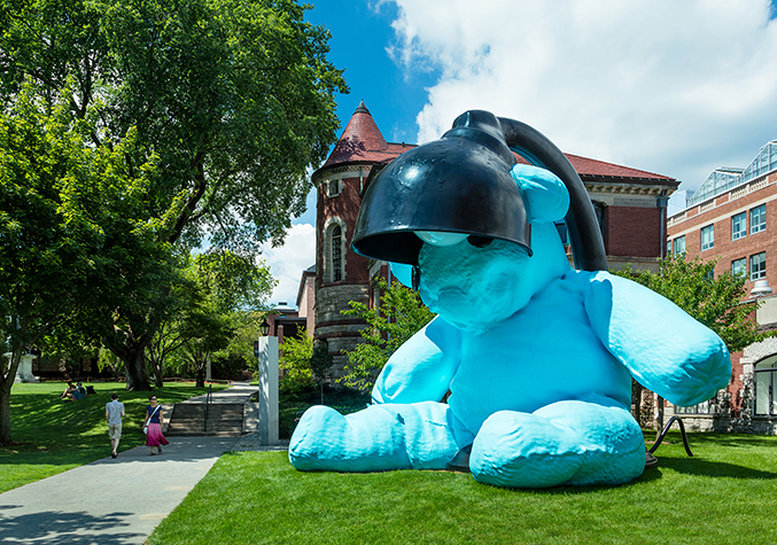
PROVIDENCE, R.I. [Brown University] —There has been no shortage of perspectives about “Untitled (Lamp/Bear),” the monumental bronze sculpture of a plush-looking teddy bear combined with a desk lamp, since it was installed on Brown University’s Simmons Quad this summer.
Now, members of the Brown and local communities will have the chance to hear about the work directly from the artist who created it. Urs Fischer, who is based in New York, will give a public lecture at the University on Wednesday, Oct. 26, at 5 p.m. at the Salomon Center for Teaching on the College Green.
The lecture is free and open to the public, but tickets must be reserved as seating is limited.
“This is a great opportunity for students and others to gain insight into Urs’ eclectic vision and his working method,” said Jo-Ann Conklin, director of the David Winton Bell Gallery at Brown and a member of the University’s Public Art Committee. Conklin said that Fischer will talk about his work in general as well as “Untitled (Lamp/Bear).”
The sculpture, which is 23 feet tall, was one of two large works installed over the summer. The second, Giuseppe Penone’s “Idee di pietra (Ideas of Stone),” is situated on the College Green near University Hall. Each work is on loan to Brown for five years.
Reactions to “Untitled (Lamp/Bear)” have ranged from delight to unease and the sculpture has spurred broader discussions about the role of public art.
Robert Emlen, the University curator and a member of the Public Art Committee, said that the purpose of public art is “not just to enliven the campus but to provide a context for discussion… We want to encourage people to stop, think and talk about it.” Emlen added that he thinks “it’s a good sign that people notice, that people are moved by these artworks,” and that the reactions are “by no means unanimous.”
Conklin said, “Because it is located in spaces that we occupy on a daily basis, instead of museums or galleries, public art often elicits strong reactions and lively conversations. That’s part of the fun and challenge in doing public art.”